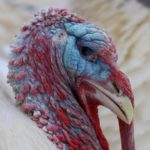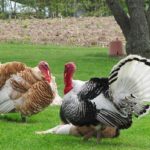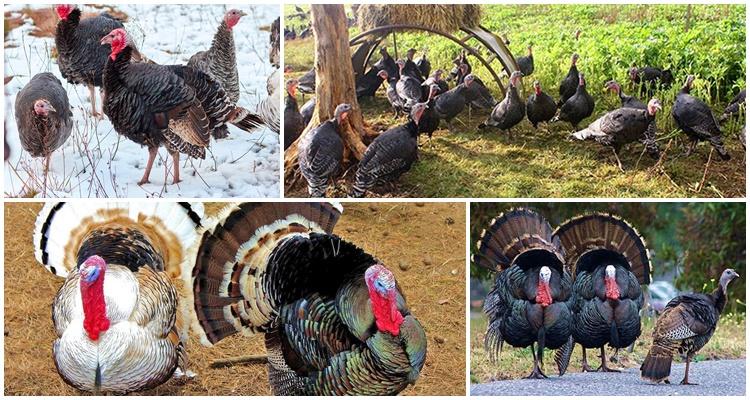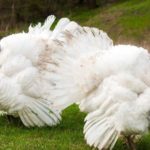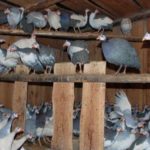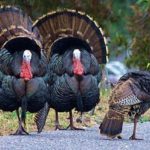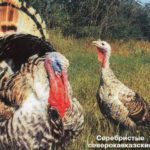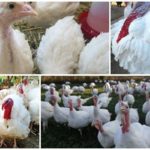Few people know about steppe turkeys - such birds are considered a rather rare species, and only recently began to be bred on an industrial scale on large farms. Turkeys of the steppe breed are characterized by passivity, unpretentiousness, resistance to external and internal stimuli, as well as relatively low productivity. Turkeys have a bright appearance - snow-white feathers and bright red beards, therefore they are often grown for decorative purposes.
Description and characteristics of the steppe breed
The steppe breed of turkeys used to be common in the south. The body is strong, muscular, placed horizontally.The plumage is white, with small inclusions of other shades allowed. Turkeys are not too tall, with strong, but sometimes crooked legs.
Thanks to natural selection during the breeding process, the breeds have increased resistance to typical diseases of turkeys. They easily adapt to any living conditions and are not demanding on the quality of food and water. The growths on the head are deep red. Steppe turkeys are not considered a separate registered breed, so their appearance may vary depending on the homestead and the preferences of the owner.
Advantages and disadvantages
Farmers in the southern regions of the country love the breed for its unpretentiousness to food and maintenance, sufficient endurance and the almost complete absence of congenital genetic pathologies, due to which chicks have to be culled. However, due to inbreeding and the almost complete absence of a unified breeding plan, representatives of the steppe turkeys are very different from each other.
This is a local breed in which improvement is carried out exclusively by the farmers themselves, without a clear plan for breeding work, so individuals differ greatly from each other, both in appearance and in productivity.
Subtleties of maintenance and care
Birds must be kept in a dry and clean house. The bedding must be covered with a sufficient layer, otherwise calluses will form on the birds’ feet, which gradually crack, and infection can get through the wounds. The premises are cleaned at least once a day, and ideally – 2 times. The optimal temperature for keeping adult birds is 13-15 degrees in winter. The breed tolerates cold well, but young animals may not withstand too intense frosts.
Crowding of birds in a limited area is not allowed - turkeys begin to fight and can cause serious damage to each other. The optimal number of heads per 10 square meters. meters – 3-4.
Diet
Turkey chicks can eat solid food from the first days of life and need regular feeding. Ideally, newborn chicks should have free access to food. You cannot feed young animals food of animal origin or table scraps. For feeding, special compound feed for turkey chicks is sold, and its quantity is calculated depending on the planned weight gain.
Breeding
Breeding the steppe breed of turkeys is not particularly difficult. The egg production of laying hens is positively affected by the length of daylight hours - at least 15 hours a day. Chicks are kept in a room with a temperature of at least 32 degrees Celsius for up to one month. Two-month-old young animals can be kept in rooms with 20 degrees, and the temperature should be gradually lowered. Dampness, draft and cold have a detrimental effect on the chicks, so the house is carefully inspected before moving in.
Broods cannot be mixed with the general herd. Chicks do not need too much space - 1 sq. m per head for walking up to 2 months - quite enough space.
The ideal first food for young animals is hard-boiled eggs. From the first days, you can also add millet and corn chaff to your diet. After a week of age, green onions, dandelions, and clover are added.
Diseases
Typically, it is possible to avoid typical diseases of young and adult birds due to the innate strong immunity and endurance of the steppe breed. However, it is recommended to give vitamin complexes to young animals and carry out preventive vaccinations on time. Due to violations of the conditions of detention, pathologies in the development of young animals, most often rickets, may appear. It is necessary to provide young chicks with a sufficient amount of green food and walking.

